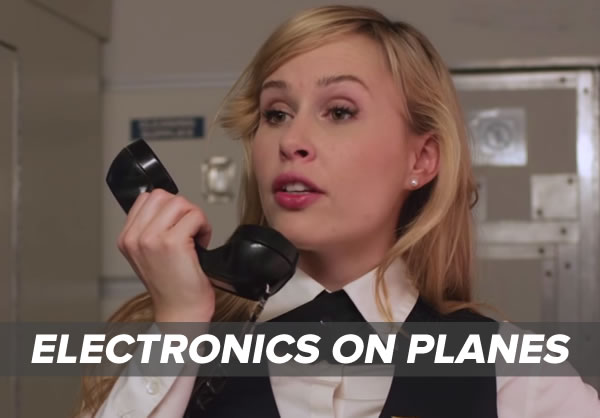
It wasn’t that long ago that we couldn’t use electronic devices during the first and last fifteen minutes of a commercial flight. The argument for the restriction was that the devices, which generate radio signals as a consequence of their circuitry operating at high frequencies, may cause interference with airplane circuitry and communications during the most critical phases of the flight: takeoff and landing.
The concern about such interference dates back to the early 1960s, when instruments on a commercial plane’s flight deck erroneously announced that it was off course and the culprit was believed to be a passenger’s FM radio. Since then, there’s been some uncertainty about whether or not personal electronics can play havoc with a plane’s avionics.
Over the past 50 years, nobody’s been able to show that a personal device can interfere with a plane’s systems, either in the lab or on flights. Hence the FAA’s recent reversal that now allows us to keep using our smartphones and tablets from gate to gate. Heavier devices, such as laptops, must still be put away during takeoff and landing, but that’s a concern about them being turned into projectiles in the event of really rough air or emergency maneuvers. I’m happy to be able to fire up my iPad and dive into a good book as soon as I’ve settled in and buckled up.
Straight from my “Why hadn’t I heard of this before?” file, here’s a gem from last summer: CollegeHumor’s video that attempts to answer the question “Why can’t we use personal electronics during takeoff and landing?” It’s funny and takes apart a lot of the rationale behind the ban, but be advised, there’s some swearing. Depending on your work environment, you may want to wait until you get out of the office to watch this or at least put on some headphones: